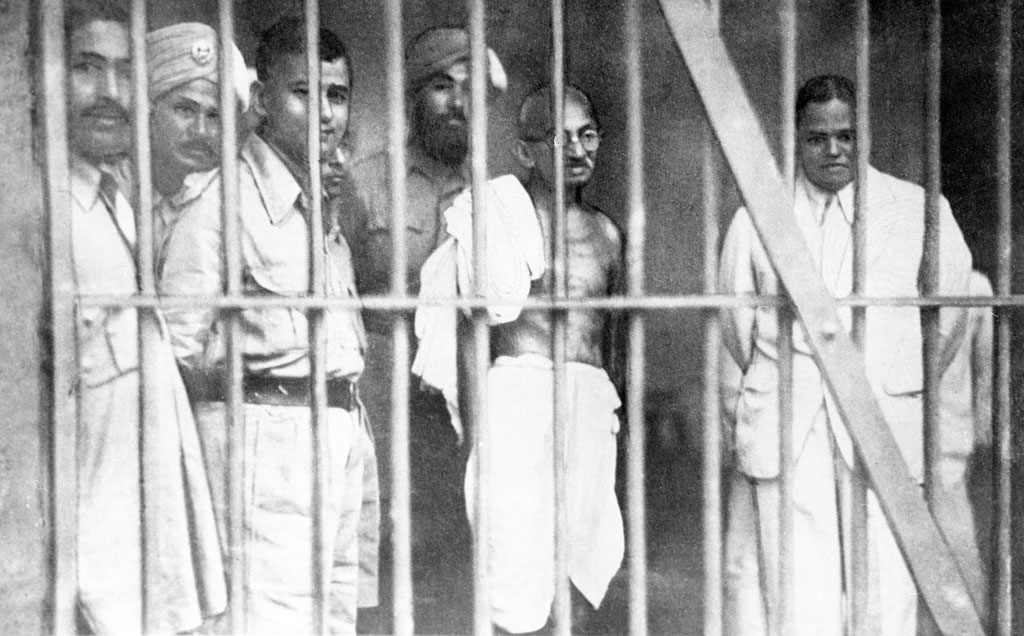
Some men changed their times...
One man changed the World for all times!
Comprehensive Website on the life and works of
Mahatma Gandhi
+91-23872061
+91-9022483828
info@mkgandhi.org

+91-23872061
+91-9022483828
info@mkgandhi.org
Gandhi’s arrest: A turning point in the global fight for freedom- By Rajdeep Pathak His arrest, far from quelling resistance, galvanised the nation, showcasing the power of non-violence as a tool for liberation and freedom On January 4, 1932, Mahatma Gandhi was arrested after the Congress Party had decided to resume a civil disobedience movement in the wake of emergency measures imposed by the British government. The arrest marked a pivotal juncture in India’s struggle for independence and left an indelible impact on global movements for justice and equality. Mahatma Gandhi’s philosophy of non-violence and civil disobedience not only reshaped India’s freedom struggle but also served as a blueprint for resistance movements worldwide. The Civil Disobedience Movement, initiated by Mahatma Gandhi in 1930, was a landmark moment in the Indian nationalist struggle. It was launched with the historic Salt March (Dandi Yatra) – where Gandhi defied British-imposed salt taxes, a symbol of colonial exploitation – foot-marching from Sabarmati Ashram in Gujarat to the river Dandi, a journey of 241 miles. This movement aimed to undermine British authority through non-violent means such as boycotting British goods, refusing to pay taxes, and disobeying oppressive laws. By the early 1930s, the movement had gained mass participation but faced severe repression from the British administration. Lord Willingdon, the Viceroy of India, adopted a policy of suppression, seeing Gandhi’s leadership as a threat to the stability of British rule in India. On January 4, 1932, Gandhi was arrested under the ‘Defense of India Act’ for his role in perpetuating ‘civil disobedience’ - after it was decided by the Congress Party to resume a ‘civil disobedience’ movement in the wake of emergency measures imposed by the British government in the form of a series of Viceroy’s ordinances.The arrest of Gandhi had immediate repercussions in India, sparking a wave of protests and acts of defiance. Historian Bipan Chandra in his book ‘India’s Struggle for Independence’; (Penguin Books, 1989), writes that Gandhi’s detention was a “turning point that revitalized the waning momentum of the movement” The arrest was perceived as an attack on India’s moral and political conscience, galvanising people from all walks of life to resist British rule. Women, in particular, stepped into leadership roles during this period. Kasturba Gandhi, Gandhi’s wife and Sarojini Naidu led marches and protests, ensuring that the movement did not lose steam. Acts of civil disobedience, such as the refusal to pay land revenue and the boycott of British institutions, intensified across the country. The arrest also amplified the moral and symbolic power of Gandhi’s leadership. His willingness to endure imprisonment demonstrated his steadfast commitment to non-violence and truth. The Indian masses responded with unprecedented solidarity, reinforcing the idea that freedom could be achieved through peaceful resistance. Gandhi’s arrest in 1932 was widely reported in the global press, drawing attention to the Indian struggle for independence. In Britain, the arrest sparked wide debate. While the colonial government justified the move as a necessary measure to maintain law and order, prominent intellectuals like Bertrand Russell and George Orwell criticized the repression. Orwell in his book ‘As I Please: Essays’ (1943); Tribune Publishing remarked, “The paradox of Gandhi’s imprisonment lay in the fact that a man advocating peace was treated as a threat to the empire”. The arrest also resonated with leaders of other anti-colonial and ‘civil rights movements’. Years later, Martin Luther King Jr. would cite Gandhi’s arrest as an example of how moral authority could triumph over systemic oppression. King said, “Gandhi’s life and sacrifices teach us that non-violence is not only a method but a philosophy of life,”, adding, “The non-violent resistance of Gandhi was the guiding light of our struggle for justice in America”. Gandhi’s arrest became a beacon for oppressed peoples worldwide, inspiring movements for freedom and justice. Nelson Mandela, who would later lead the anti-apartheid struggle in South Africa, credited Mahatma Gandhi as the pioneer of non-violent resistance. In his autobiography “Long Walk to Freedom”, Mandela wrote, “The spirit of defiance Gandhi embodied in India was equally relevant in South Africa’s fight against apartheid”. Historians and political theorists have studied Gandhi’s detention in 1932 as a case study in the dynamics of resistance and power. British historian Judith M. Brown, in her seminal work “Gandhi: Prisoner of Hope” (1989) also points out that Gandhi’s imprisonment highlighted the moral contradictions of British colonialism. “By incarcerating Gandhi, the British sought to delegitimize him, but instead they exposed their own vulnerability to ethical critique”. International British historian Erik Hobsbawm situates Gandhi’s arrest within the broader context of anti-colonial movements. In “The Age of Extremes: The Short Twentieth Century, (1914-1991), Hobsbawm notes that “The imprisonment of Gandhi was not merely an Indian event; it marked the erosion of imperial authority on a global scale”. Today, as the world grapples with challenges like systemic injustice, racial inequality, and climate change, Gandhi’s principles of civil disobedience remain a guiding light. Some movements such as ‘Extinction Rebellion’ (a UK-founded global environmental movement and ‘Black Lives Matter’ draw on the strategies of non-violent protest that Gandhi exemplified. Mahatma Gandhi’s example serves as a reminder that moral courage and non-violent resistance are humanity’s most potent tools for building a just and equitable society. Courtesy: The Pioneer, dated January 7, 2025. |